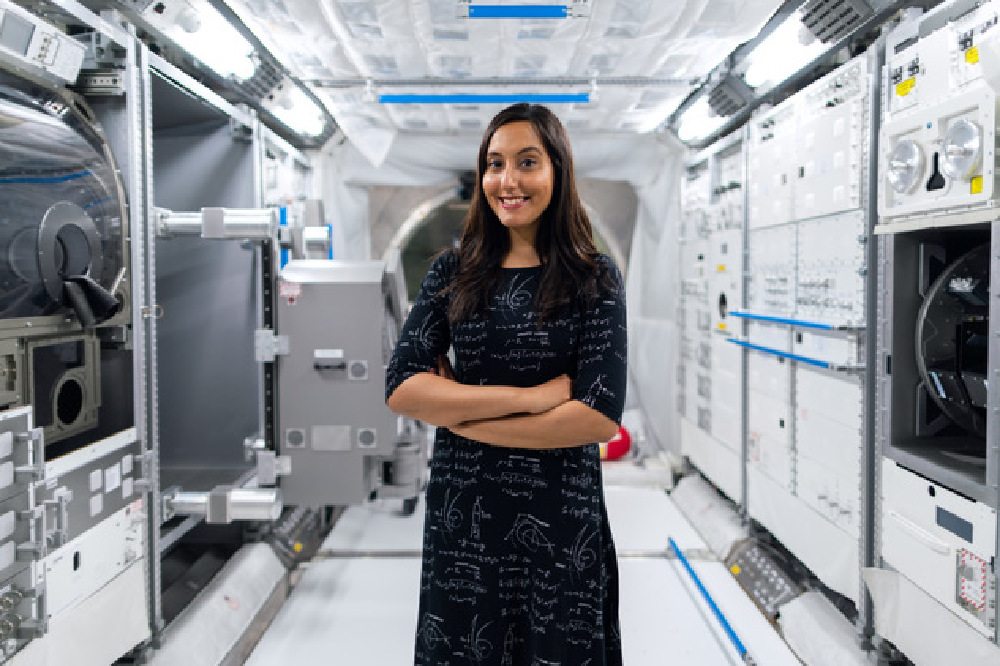By Vinita Marwaha Madill

Vinita Marwaha Madill
My day always has a speedy start! At 8am, before I can brew a nice cup of tea, I remotely meet with a global team in Asia and we collaborate on an innovative lunar exploration project.
It’s not to 9am until I finally get to pour myself a nice cup of Yorkshire tea and make sure that all emails have been replied to. I also prioritise my calendar tasks, so I am organised for the day ahead.
Just after half 9, my team and I work on robotic and autonomous systems that play a huge part in getting humans to space for lunar exploration. I then meet with the Mission Control management team to update them on these space exploration and robotics projects.
At 10am, along with the company’s Chief Science Officer and software engineers, we work to develop a system that our teams in mission control on Earth can use to operate a rover on the surface on the Moon to search and receive exciting scientific data. We test these systems on an Earth location that has similar exploration conditions to the surface of the Moon. Some days this includes places like glacial and volcanic flow fields in Iceland and dune fields at White Sands National Monument, New Mexico, USA.
This is then followed by a call at 11am with the European Space Agency to discuss future lunar exploration projects.
12:00pm – Lunchtime! I get together with the people that are in the office to enjoy our lunch outside.
After lunch I meet with potential partners to develop the Mission Control Academy programme, which is an immersive educational experience for students to design and run their own mission using a real rover in an environment like Mars. The program is designed to be delivered to anyone around the world with an internet connection and has been deployed to students on four continents!
This is followed by another admin slot. I reply to more emails and attend calls with international space agencies and commercial space companies working on lunar exploration, if I am lucky, I squeeze in another cup of tea. At 3pm I attend a call with the Canadian Space Agency and international commercial space companies to discuss and develop our lunar focused projects.
Come 4pm, my working day is nearly over, and I head to my son’s nursery to take him home for a lovely family dinner. But before I properly wind down at 7:30pm I tune into a virtual meeting with the Rocket Women global team and we brainstorm inspirational outreach initiatives.
Working on enabling the future of space exploration is extremely exciting. We’re going to see a big ramping up of interest in lunar exploration, both in orbit and on the surface from international agencies and governments, but also from the private sector and from commercial entities. This interest is going to be driven by science, by engineering, by technology development, by preparing for future exploration, by understanding the resources that we find locally at the Moon and how we can use this to prepare us to eventually explore Mars.
The lunar gateway is a small space station in lunar orbit that is currently being designed by NASA, in conjunction with international partner space agencies European Space Agency (ESA), JAXA (the Japanese Space Agency) and the Canadian Space Agency (CSA) to enable humanity to return to the vicinity of the Moon in the 2020s, building on the international cooperation that built the International Space Station. The spaceship will be humanity’s next step beyond Low Earth Orbit, and out into the Solar System, 1000 times further out in the solar system than the International Space Station.
Humanity needs return to the Moon firstly because missions to the lunar surface offer valuable resources. But moreover, the Moon is a scientific treasure trove – a repository of four billion years of solar system history and as a place to observe the Earth and universe.
Most importantly, the Moon will be the first place where humans learn to live and work on another celestial body. Just three days from Earth, the Moon has low gravity and natural resources that make it an ideal location to prepare people and machines for venturing farther into space. Serving as a stepping stone to demonstrate key technologies to enable longer term exploration of the solar system, including Mars.
Vinita is part of This is Engineering Day on 4 November 2020, a day dedicated to celebrating engineers and engineering. Created by the Royal Academy of Engineering, This is Engineering Day 2020 showcases the feats of engineering that exist all around us and that make a difference to our everyday lives and futures, but often go unnoticed, as well as the engineers behind them. For further information visit www.thisisengineering.org.uk or follow #BeTheDifference.
RELATED: A day in the life of a palliative care nurse at Sue Ryder

Tagged in Moon

